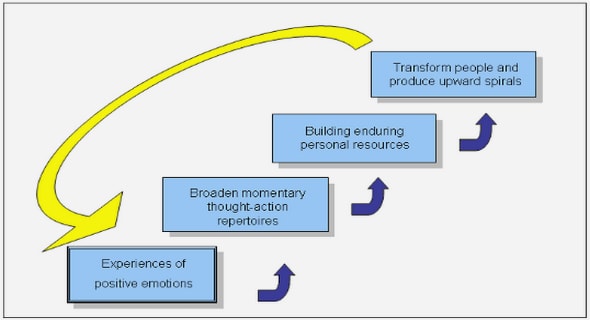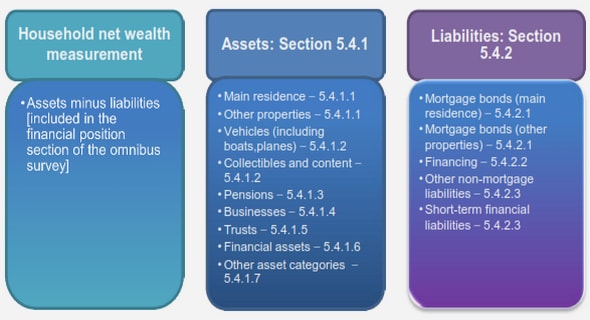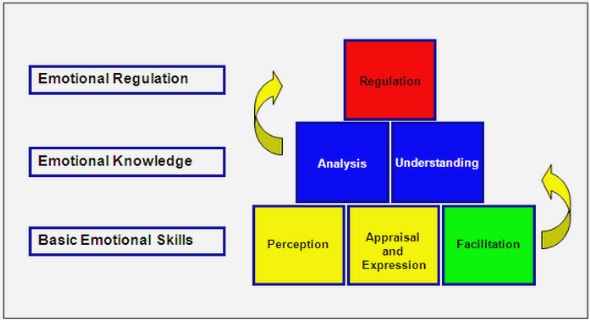Get Complete Project Material File(s) Now! »
Inhibited spreading of the wave packet through gravity
In the world of macro objects, we have two contradicting principles. First is the Newtonian principle, which states that if we have an object upon which no external force is acting, then it stays at rest, i.e. it is stationary. Then, Quantum Mechanics tells us that this macro object is in fact described at the quantum level by a wave packet, with a characteristic size. In Quantum Mechanics, this wave packet spreads, becomes larger, as time goes by, as if we were losing precision on the object. The macro object would thus not be stationary, and hence not appear as localized as what we seem to observe, according to Diòsi [6].
This spread of the wave packet depends on its characteristic size : the larger the wave packet, the slower the spread. If the characteristic size is large enough, for example on the order of 10¡8 cm, then the spreading is so slow that we would not see it. But Diòsi argues [6] that the characteristic size of atomic wave packets is much smaller than that, around 10¡12 cm, meaning that the quantum spread would be much faster, and we should be able to see it experimentally.
A soliton is a wave packet, solution to a wave equation, that keeps its shape through time, just like a wave on the ocean that would never change as it moves forward, which are called solitary waves. The problem in standard Quantum Mechanics, described by the Schrödinger equation, is that, as discussed above, wave packets slowly spread out, rende-ring soliton-like solutions impossible. It should be clear then, that to make these wave packets keep their shape, there should be something holding them in place. According to.
Diòsi [6], this can be gravity. He shows that the Schrödinger–Newton equation, which is the Schrödinger equation to which we add the Newtonnian gravitational potential of the system, thus creating a self gravitating process, possesses soliton like solutions, which would solve the above-mentioned problem. He also gives the order of the characteristic width a0 of the ground state wave packet for a pointlike macro object, with M the mass of the macro object.
As for the width of the ground state of an extended macro object of radius opposed to a pointlike object, he suggests. In [22], instead of considering solitons, the authors explicitly analyzed numerically wave packets of di erent masses and compare both evolutions using the free Schrödinger equation, and the Schrödinger–Newton system. Using the atomic mass unit, 1 u ˘ 1.66 ¢ 10¡27 kg, they found that for an initial Gaussian distribution of width 0.5 „m and a mass less than 6 ¢109 u, the wave packet is still spreading, just like the case of the free Schrödinger equation, but at a reduced rate. For masses greater than 7 ¢109 u, the wave packet collapses, making macroscopic objects localized. For the width considered here, 0.5 „m, the soliton-like solution would be one with a fine tuned mass between 6 and 7 ¢ 10¡9 u, so that the spread and the gravitational collapse are at equilibrium. This numerical result is in accordance with the formula given by Diòsi (1.1).
Measure problem, reduction of the wave packet
Two major theories emerged in the 20th century, General Relativity and Quantum Mechanics, which are both undefeated in their domain of application, but whose base principles are incompatible. Because of its wider applications on our scale, Quantum Mechanics is considered by many as more fundamental than General Relativity. This led to a movement of people trying to bring General Relativity in line with Quantum Mechanics. Penrose argues [24, 25] that this should not be the case, and that it is worth investigating the opposite way of thinking, bringing Quantum Mechanics in line with General Relativity principles.
An important open question in Quantum Mechanics is about the measuring process, or the reduction of the wave function. The evolution of the quantum world seems unitary and linear. Problems arise when considering the superposition principle. A wavefunction made of the superposition of two states can be described with the Schrödinger equation, with its linear unitary evolution, yet when observing the wavefunction, it collapses into one state or the other. A measurement seems to lead to a discontinuous jump of the wave function, as is depicted in Schrödinger’s cat thought-experiment : we see the cat either dead or alive when we open the box, we do not see the superposition. Several interpretations, Copenhagen, Bohm, Many Worlds, etc, came to life through the years to explain this apparent inconsistency of Quantum Mechanics, suggesting a reduction process to explain this discontinuous jump. Penrose suggests that the consideration of gravity and GR principles in Quantum Mechanics can lead to a solution to this measurement problem. Indeed, consider an experiment with macro objects, much like Schrödinger’s cat, where we have, in a linear order, a photon emitter, a beam splitter, and a photon detector that moves a massive object if a photon is detected. If the photon goes through the beam splitter, the massive object is moved, but if the photon is reflected, then nothing happens. In both cases, after the photon was emitted, the resulting configurations would be stationary. If we consider Quantum Mechanics, before measuring this system, it would be a superposition of the two states : object moved and object untouched. When we introduce gravity in this system, including the principles of General Relativity, we get a superposition of two spacetimes. We encounter two problems with this :
— The superposed state would not be stationary, even if each state is independently stationary, because of gravity .
— The principle of general covariance forbids the identification of points between two spacetimes, making the superposition of the two spacetimes in this experiment, that di er by a translation, ill-defined.
Penrose argues [24, 25] that a measure of this ill-definiteness is the gravitational self-energy EG of the di erence between the gravitational fields of the two spacetimes. Indeed, the “closer” the two states are, the smaller this energy is. Since this ill-definiteness can be related to an energy, we can call for an analogy with particle physics, and define a characteristic time of instability, through the Heisenberg uncertainty. We get a lifetime ¿ of the order of ~ . (1.3) ¿… EG.
According to Penrose, in this previous experiment, the resulting state being a superpo-sition of two spacetimes, is inherently unstable. What happens, according to Penrose, is that after a lifetime of the order of (1.3), the superposed state naturally decays into one of the two states, without any measurement. This is depicted by Penrose in figure 1.1. This might explain why we do not see superposition of states on our macro world.
The value of the lifetime (1.3) is certainly interesting, because while Plank’s constant is very small, the gravitational self energy of the di erence of the two gravitational fields is also very small. As a result, the decay time for macro object ought to be accessible through experiments. Penrose computed [24], that doing this experiment with a water drop of 10¡5 cm of radius would result a in superposition state with a lifetime of the other of one hour, while for a water drop of radius of 10¡3 cm it would be about 10¡6 s. Several experiments are planned [26, 27, 28] to study this. One of them is the experience MAQRO [27, 28], which stands for macroscopic quantum resonators. It is a
proposed experiment to the European Spatial Agency, embarked in a satellite, aimed at testing quantum experiments in microgravity to see the relevance of alternative theories for macro objects, such as Schrödinger–Newton. Indeed, the SN equation is a natural candidate to describe the Quantum Mechanics processes behind Penrose’s ideas.
Localization and conformal invariance : the case for the MP SSC
To obtain a closed system of equations describing an elementary particle, one may want to impose, alongside localization on its worldline, conformal invariance. Considering that conformal invariance is the relevant symmetry when dealing with massless (and spinless) particles, see for instance the Maxwell equations, it may be legitimate to wonder if a theory, in the framework of the MPD equations, describing massless photons with spin 1 should manifest conformal invariance. This has been studied by Duval and Fliche in [99]. They have shown that, when using Souriau’s framework (see the previous section 2.2.2) to obtain the MPD equations, and when imposing that the distribution T associated to the massless spinning particle is conformally invariant, the Mathisson–Pirani SSC is recovered. Let us outline the procedure. Since they are using Souriau’s framework, the spinning test particle is represented by the matter distribution (2.17) on a worldline C , written explicitly, TC (–g ) ˘ 1 ZC P„X˙ ”–g„” ¯S‰„X˙ ”r‰–g„” d s. (2.28) 2 ¡ ¢.
As we have seen in the previous section, from this distribution, the Principle of General Covariance (2.8) leads to the MPD equations (2.3)–(2.4). One can now ask for conformal invariance. In [99], it is implemented by requiring, TC (‚g ) ˘ 0, 8‚ 2 Cc1(M). (2.29).
From (2.28) and (2.29), one immediately finds that S „ ˙ ‰ ˙ „ and P ‰ ˙ ‰ X ˘ fiX X‰ ˘ fi˙, with fi 2 C 1(C , R) a function on the test particle’s worldline. From their study, and the standard assumption that S is of rank 2, or det(S) ˘ 0, it then follows that fi ˘ 0, ˙‰˙ ¡ 2¢ hence recovering the Mathisson–Pirani constraint, and that X X‰ ˘ 0, Tr S ˘ const, ¨ ˙ and X Ò X .
The main result from [99] is that when imposing conformal invariance together with the MPD equations to describe a spinning massless test particle, the Mathisson–Pirani constraint appears naturally, and the particle travels on a null geodesic.
However, two caveats are worth mentioning. First, as noted in [99], the 4-momentum P of the particle considered here is spacelike. This is also mentionned by Mashhoon in [94] who argues that the canonical momentum of massless spinning particles is not restricted to be timelike. Second caveat, which appears in the work of Duval and Fliche [99] but is not discussed, is that when studying the symplectic structure of their conformally invariant model for the massless spinning photon, its evolution space has dimension 11. It is recalled in the work of Duval and Schücker [78] in a footnote p. 7, mentioning that the dimension of this evolution space leads to, in the flat spacetime limit, degrees of freedom with unclear physical interpretation. These extra degrees of freedom may be ”fiflSfifl. linked to the analysis of [91, 92, 93], where they mention that the Mathisson–Pirani SSC leaves some “residual gauge freedom”, and they argue that these are not a problem.
Equation of motions for photons with Tulczyjew SSC
First, let us introduce the notations that will be used in the rest of this chapter. The metric has signature (¡, ¡, ¡, ¯). The components of the Riemann curvature tensor are defined by the convention R„”fifl ˘ @fi¡„fl” ¡@fl¡„fi” ¯ ¢¢¢. In this paper, we often suppress indices by considering linear maps instead of 2-tensors. For instance, we use the linear map S ˘ (S„”) and likewise for the shorthand notation R(S), with R(S)„” ˘ R„ In the same vein, we write P for the vector P and P ˘ (P„) for the associated covector P„, where indices are lowered with the metric. Another shorthand notation will be R(S)(S) ˘ R„”fiflS„”Sfifl.
For a skew-symmetric linear map F , the operator Pf gives its Pfa an Pf(F ). With the fully skew-symmetric Levi-Civita tensor †„”‰¾, with †1234 ˘ 1, we have the expression q Pf(F ) ˘ ¡18 ¡det¡gfifl¢†„”‰¾F „”F ‰¾. We have the relation Pf(F )2 ˘ det(F ). Indeed, the determinant of a skew-symmetric matrix can always be written as a perfect square.
Table of contents :
Abstract
Résumé
Acknowledgements
Contents
Résumé long en français
0.1 Introduction
0.2 Les symétries de l’équation de Lévy-Leblond–Newton
0.2.1 Équation de Lévy-Leblond–Newton
0.2.2 Calcul des symétries
0.2.3 Calcul des quantités conservées
0.2.4 Conclusions
0.3 La trajectoire de particules à spin en Relativité Générale
0.3.1 Le principe de covariance général (PCG) et équations de Souriau– Saturnini
0.3.2 Espace-temps de de Sitter
0.3.3 Biréfringence gravitationnelle dans un espace-temps de Schwarzschild
0.3.4 Interaction entre le spin d’un photon et une onde gravitationnelle .
0.3.5 Conclusions
1 Symmetries of the Lévy-Leblond–Newton equation
1.1 Introduction to the subject
1.1.1 Open questions in Quantum Mechanics
1.1.2 Notations in this chapter
1.1.3 The Schrödinger–Newton equation
1.1.4 The Lévy-Leblond–Newton equation : overview of the chapter
1.2 Introduction to symmetries and geometric tools
1.2.1 Why study symmetries ?
1.2.2 Newton–Cartan structures : the geometry of Galilean relativistic spacetime
1.2.3 Bargmann structures : a Lorentzian tool to study Galilean relativistic symmetries
1.2.4 Including spinors in the theory
1.3 The Lévy-Leblond–Newton system
1.3.1 Lifting LLN on the Bargmann space
1.3.2 Recovering the LLN system on Newton–Cartan
1.3.3 Current and chirality
1.4 LLN symmetries
1.4.1 Spacetime symmetries
1.4.2 Infinitesimal actions of the LLN group
1.4.3 Integration to group representation
1.4.4 Action, energy-momentum tensor and conserved quantities
1.5 Conclusion
2 Motion of spinning particles in General Relativity
2.1 Introduction
2.1.1 An equation of motion for test particles in General Relativity
2.1.2 Overview of the chapter
2.2 Deriving equations of motions for spinning massless test particles
2.2.1 A bit of history
2.2.2 Souriau’s model
2.2.3 Spin Supplementary Conditions
2.2.4 Equation of motions for photons with Tulczyjew SSC
2.3 The simple example of de Sitter spacetime
2.3.1 Direct computation
2.3.2 Explicit computation and general remarks about coordinates
2.4 A spinning photon in a flat FLRW background
2.5 Birefringence of light around a Schwarzschild body
2.5.1 Spinning massless particles
2.5.2 Null geodesics & spinless gravitational lensing
2.5.3 Numerical solutions
2.5.4 Perturbative solutions
2.5.5 Remarks on pure Schwarzschild backgrounds
2.5.6 An attempt at improving the null infinity limit with the cosmological constant
2.5.7 Conclusions
2.5.8 Comparison with existing literature
2.6 A photon in a gravitational wave background
2.6.1 Introduction
2.6.2 The Souriau–Saturnini equations in a GW background
2.6.3 Equations of motion for the ultrarelativistic photon
2.6.4 Conclusions
2.7 Final remarks
Bibliography


